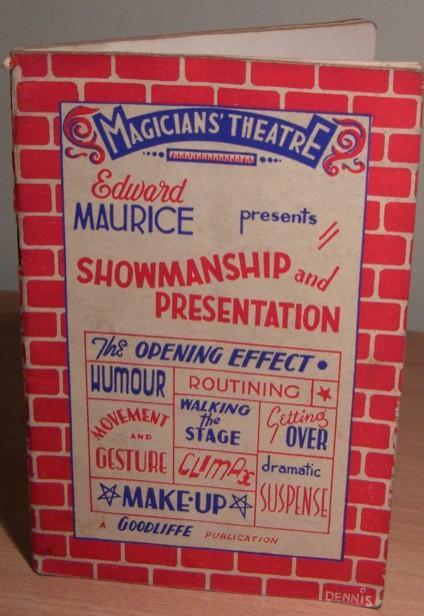The Roller Coaster Experience
This is a continuation of the topic introduced in a previous article on Putting Together a Unique Magical Programme
The ultimate goal of variety in your programme is to impact the audience with an extraordinary series of experiences, much like the drops, curves, and loops of a thrilling roller coaster ride. Of course those thrills are running on a predetermined track, and so can our magic performances. Longstanding show business wisdom offers up a well-worn path traveled by successful acts for over a century.

Edward Maurice does a fine job of addressing the subject in his 1946 book “Showmanship and Presentation.” In fact, I’d take much of the praise heaped upon Henning Nelms’ “Magic and Showmanship” and redirect it to Maurice’s more succinct work. His writing seems to come more from professional experience than Nelms’ armchair theory.
I’ll summarise Maurice’s guidelines for the structure of an act intended to capture attention and build interest towards an exciting finale. While he doesn’t delineate a set number of routines, it seems to break down into four phases;
Opening
Make a good first impression as quickly as possible. Connect with the audience, look into every corner of the crowd as you speak. Your first magic effect ought to have an element of surprise, as it will encourage paying close attention. Introduce your personality as a baseline which will remain consistent throughout your performance.
Work at a quick tempo. Returning to the metaphor of the roller-coaster, the best ones kick off so fast you’re pushed back into your seat, and they quickly ratchet their way up a steep incline into a breathtaking freefall. Now you’re up to speed moving along fast.
Establish Yourself
As you transition to the second routine, Maurice puts great emphasis on removing any lag. Let the inertia of the opening push forward without pause. He points out how he picks up his next props, some handkerchiefs for Sympathetic Silks, during the applause for his opening effect, and carries on without delay.
By contrast he tells of many a club magician who performs a snappy opening effect, like gloves to bouquet, then limps along like a burst balloon having spent all it’s energy in one go.
In this second routine lay your personality on thick. You’re looking to confirm the first impression and build upon it. Present yourself as a relaxed, comfortable performer, standing with ease, making casual remarks to the band leader.
Establish the theatrical illusion of your performance. Let people get swept up in whatever fictional world you choose to create as you demonstrate your magical powers.
Have Fun
Knowing that you are a capable and confident entertainer, the audience can relax into complete and amused enjoyment. This is the time to do something which involves the audience, perhaps with onstage participation.
Maurice suggests something which plays broad, both mentally and physically. It requires no great concentration from the audience to follow, with a simple plot. It fills the theatre, if not with large props by moving the action around the room, playing to both sides of the theatre. It’s about creating a sense of ‘abundance’… of laughter, or spectacle. This is the time to let loose and create a ruckus.
Closer
With the audience in state of happy enthusiasm, it’s time to gather focus, reign in the attention, and concentrate on the performer. Maurice suggests four ideal types of effects to conclude an act; a Knock-Out (as in confounding mystery), Productions, Highly Dramatic, or Highly Magical / Spectacular.
He particularly suggests a Knock-Out followed by a big Production is a strong way to end. This is the grand loop-de-loop of your roller-coaster ride, giving it all you got.
It must be staged such that the audience will know, in their gut, when you are finished, with no doubt of the moment of finality. This spontaneous applause at the natural conclusion will be much more enthusiastic than any response artificially prompted with a bow.
While there are many structural templates which follow a similar track I appreciate the vagueness of this model. A strict paint-by-number structure might result in us all having the same picture, while this objective-oriented approach leaves room for us to fill in the specifics to our own taste.
This particular format is designed for the traditional 15 to 20 minute Vaudeville or Music Hall turn. This is the ideal length to build your performance skills. Long enough to get up to speed, stretch your legs, and bring it back to the station without having to slog through the marathon of a full evening show by yourself. Developing in short spurts is better for both you and your audiences.
Roy Benson
Benson published his formula for act structure in his lecture notes. Later republished in the Levent book. Briefly: Benson’s 4-Act Structure 1. Gain attention and interest 2. Create Likability 3. Strongest Effect 4. Effect that says “It’s Over”
You must sign in to add a comment.